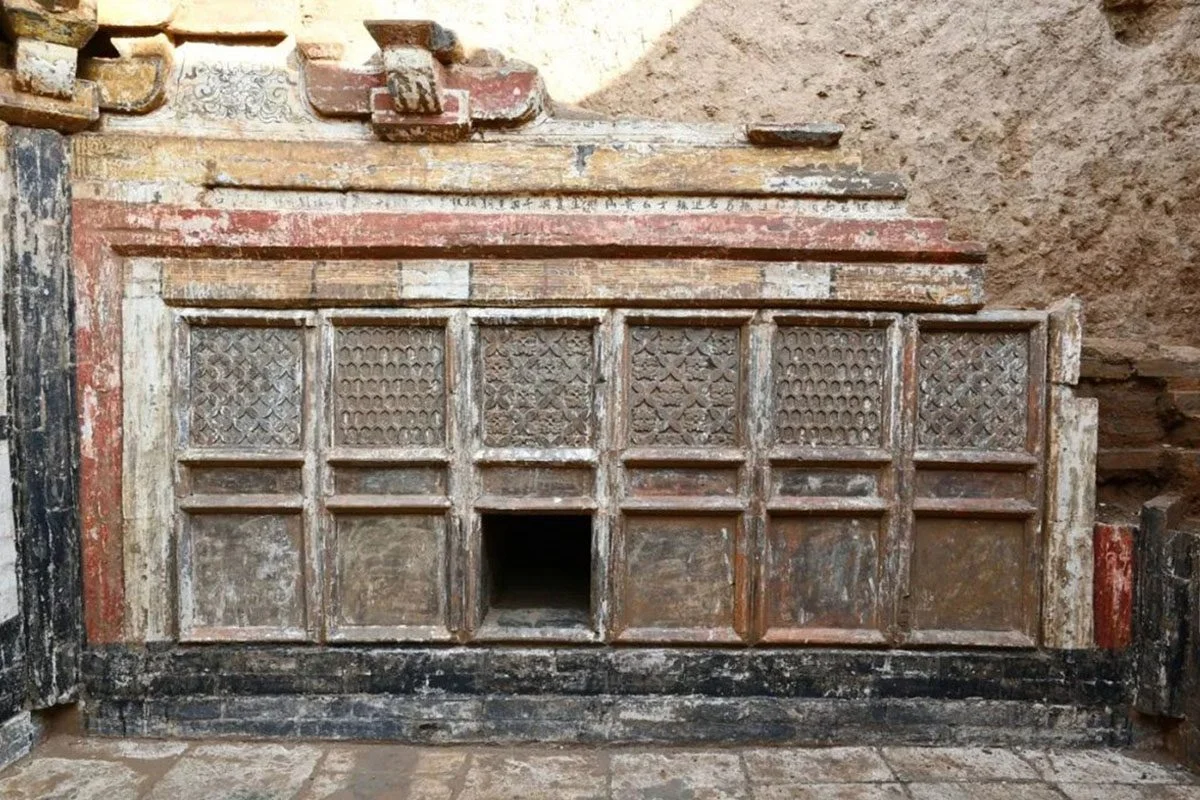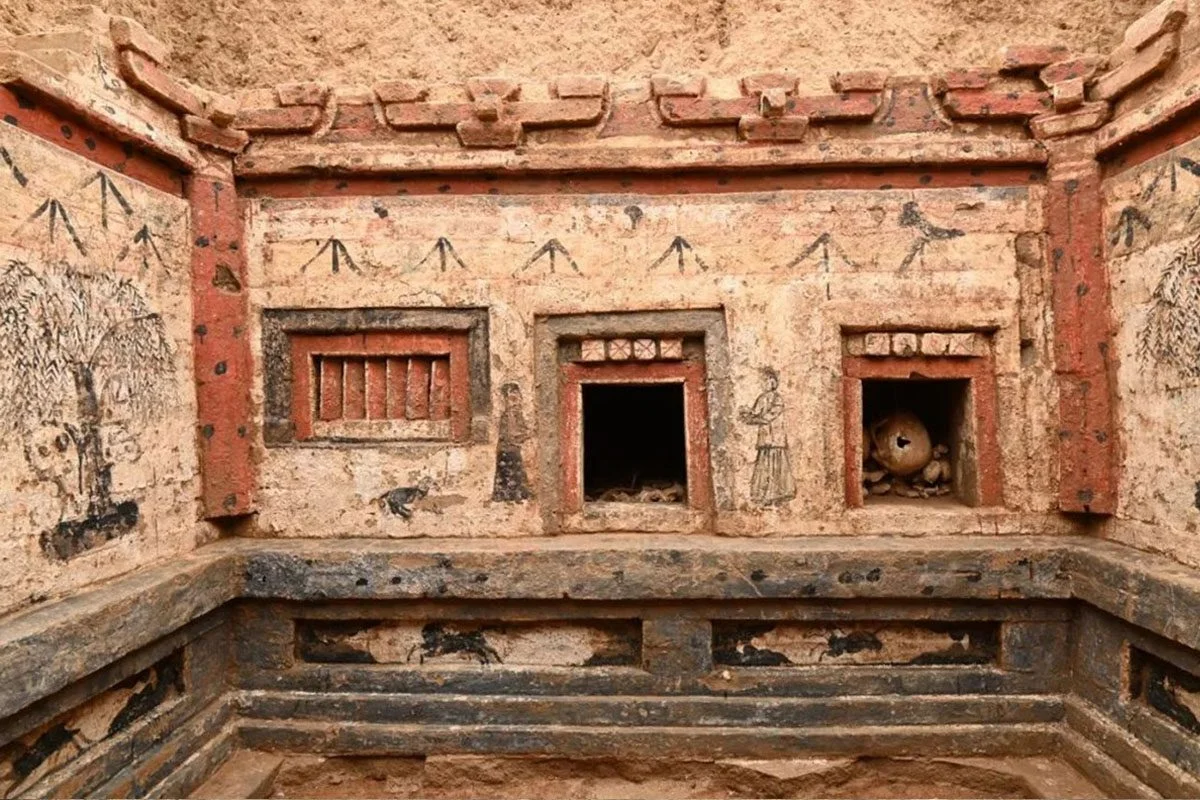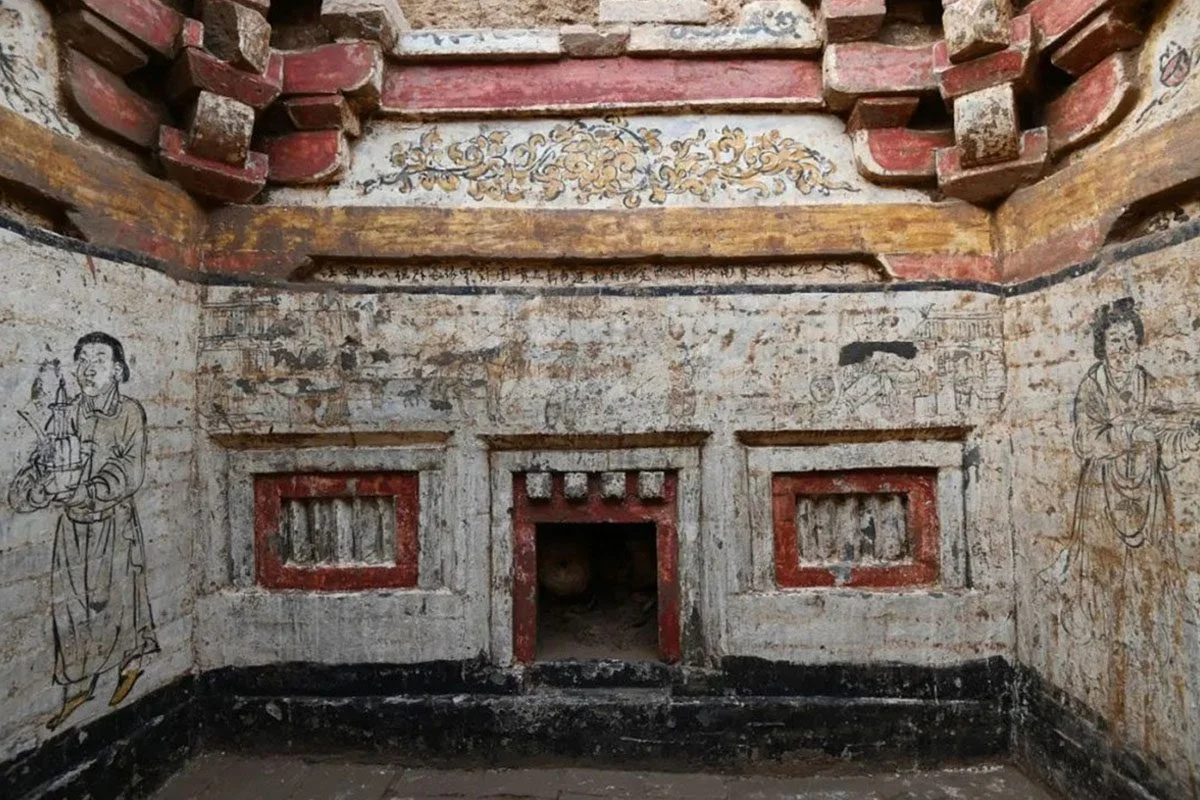Archaeologists from the Changzhi Archaeological Research Institute have uncovered three decorated Jin Dynasty tombs in Changzhi city, China.
The tomb was first discovered in November 2023, with the results of the excavation now published by the Shanxi Institute of Cultural Relics and Archaeology.
According to the researchers, the site consists of three brick-chamber tombs that date from the Jin Dynasty, an imperial dynasty of China that existed between AD 1115 and 1234.

During the Jin dynasty’s rule, its emperors embraced Han customs and reinforced the Great Wall to defend against the rising Mongol Empire. Additionally, the Jin dynasty facilitated various internal cultural developments, including the revival of Confucianism.
The three tombs are located in Qiangcheng village in Changzhi’s Lucheng district, however, they were found in varying degrees of looting and damage.
According to the researchers, the walls of the tombs are decorated with murals showing human depictions and flora, and have characteristics and architectural styles typical of the Jin period.

Tomb M19 and Tomb M20 have brick-carved arches, doors, windows, figures and floral patterns, and inscriptions that describe events from history. Tomb M21 is more distinct among the three tombs, and has chamber walls that imitate a wooden structure.
Speaking to ChinaDaily: “The tombs reflect traditional Chinese culture, social ethics, ancient architectural characteristics, tomb architecture and funeral customs, providing new materials and insights for the study of ancient tomb culture and archaeological history.”
Header Image Credit : Shanxi Institute of Cultural Relics and Archaeology
Sources : ChinaDaily





